Museum Of Modern Art (MOMA)
My first stop was MOMA (Museum of Mordern Art) my solo venture out in the big city... It was fun riding the subway hoping Avenues and Streets.... MOMA is on the 53rd street between Fifth and Sixth avenue...

53rd street

There at MOMA!!
So as I entered the museum, I realized its HUGE and I had to pick my options... I decided to stick to the Collection Galleries that displays artworks of the masters from 1880s to 1940s

As I enter the floor I see this wall with Campbell's Soup Cans, a work of art produced in 1962 by artist Andy Warhol. Medium : Synthetic Polymer Paint
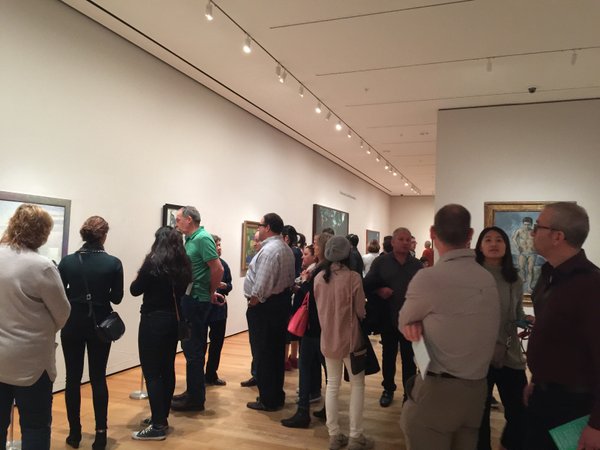
It was an amzing view inside..

Started with Paul Gauguin's(French 1848-1903) The seed of the Areoi Medium : Oil on Hessian fabric

Still Life with Three Puppies Oil on Wood by Paul Gauguin (French 1848-1903)

Portrait of Joseph Roulin
Oil on Canvas Vincent Van Gogh (Dutch 1853-1890)
The Roulin Family... Joseph, his wife Augustine and their three children were often the subjects of Van Gogh's paintings.. Joseph a postman was good friends with Van Gogh.

and there there it was..... the star of the show... in full security... can go only upto 2 feet close to this painting...

The Starry Night
Oil on Canvas Vincent Van Gogh (Dutch 1853-1890)
It depicts the view from the east-facing window of his asylum room at Saint-Rémy-de-Provence, just before sunrise, with the addition of an idealized village..
The painting has been in the permanent collection of the Museum of Modern Art in New York City since 1941..

The Sleeping Gypsy
Oil on Canvas Henri Rousseau (French 1844-1910)
I found Henri Rousseau's works extremely interesting...there is another paint at MOMA called The Dream...where a women is partially laying on a sofa in a thick Jungle.. such intricate foilage...
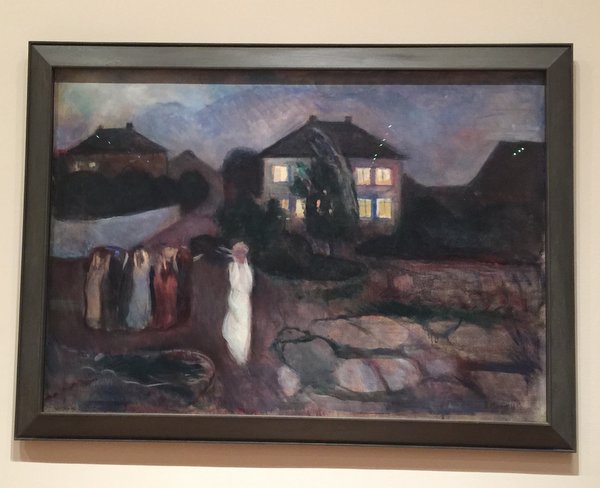
The Storm
Oil on Canvas Edvard Munch (Norwegian 1863-1944)
The setting of The Storm is the Norwegian seaside village of Åsgårdstrand, where Munch often spent his summers. The main figure and the group behind her cover their ears to keep out the sound of the storm’s howling winds. This painting was made the same year Munch originated the motif of The Scream. Here the depiction is more naturalistic, and the characters are female rather than male, but the compositions both reflect Munch’s preoccupation with the concept of a solitary individual set apart from a community of others (taken from MOMA site..)
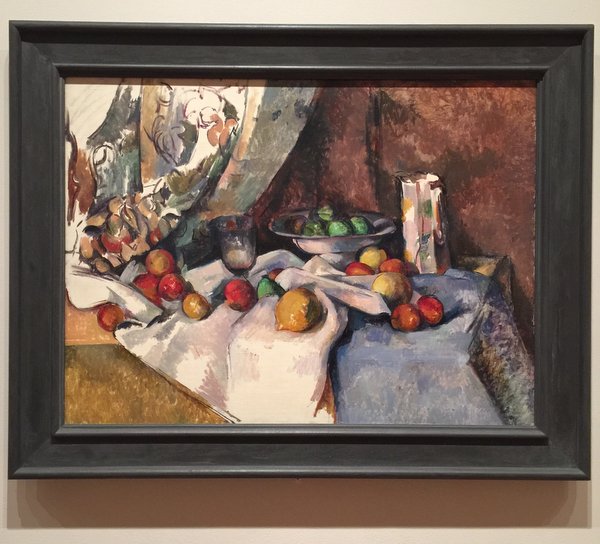
Still Life with Apples Oil on Canvas Paul Cezanne (French 1839-1906) Such fun colors!
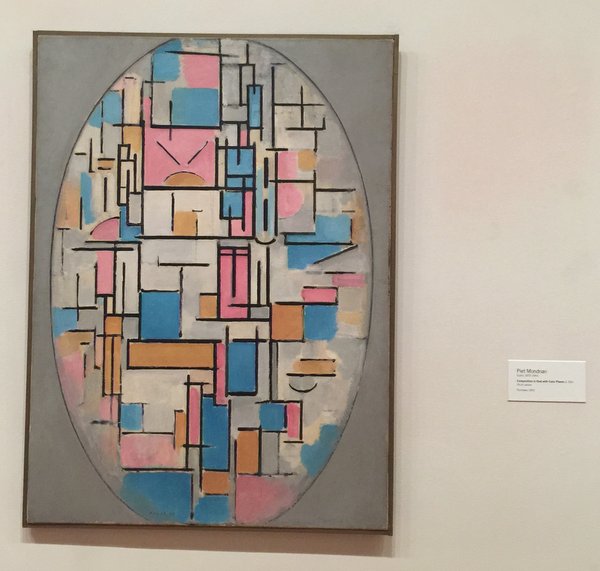
Composition in Oval with Color Planes 1 Oil on Canvas Piet Mondrian (Dutch 1872-1944)
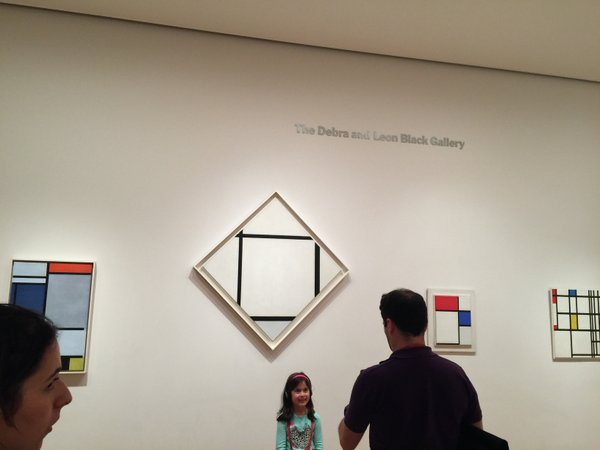
Piet Mondrian (Dutch 1872-1944) More works of on this wall...I love the plain simple shapes!

L'Homme aux cartes (Card Player) oil on canvas Pablo Picasso (Spanish 1881- 1973) My first with Picasso 😉
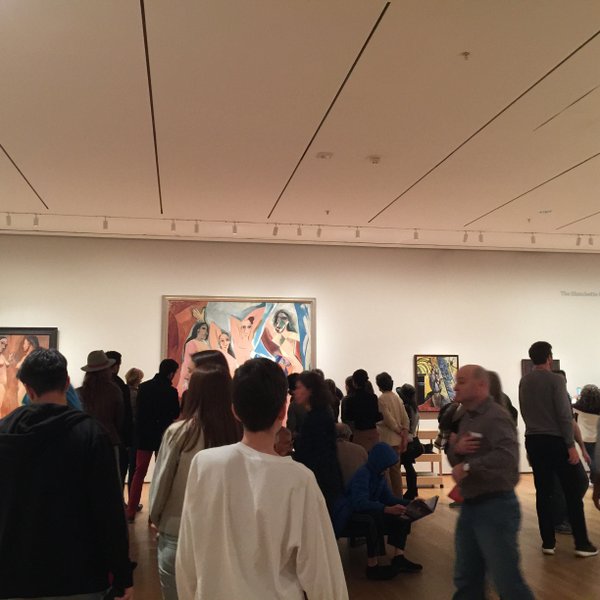
Les Demoiselles d'Avingnon Oil on Canvas Pablo Picasso (Spanish 1881- 1973) A huge painting of figures by the 25 yr old Piccaso!

A break to get collected..

Male Model Oil on Canvas Henri Matisse(France 1869-1954)

The Dance (First Version)
Oil on Canvas Henri Matisse(France 1869-1954)
In March 1909, Matisse received a commission from the Russian merchant Sergei Shchukin for two large decorative panels, Dance and Music (now in the Hermitage Museum, St. Petersburg). This painting was made quickly as a compositional study for Dance, which was intended to hang on the landing of a staircase, approached from the lower right. This may be why the lower figure leans into the painting, increasing the sense of movement, and why the figure at left is so large, slowing it. Drawing visible beneath the paint shows that Matisse started with two smaller figures where the large figure is now.(taken from MOMA site..)
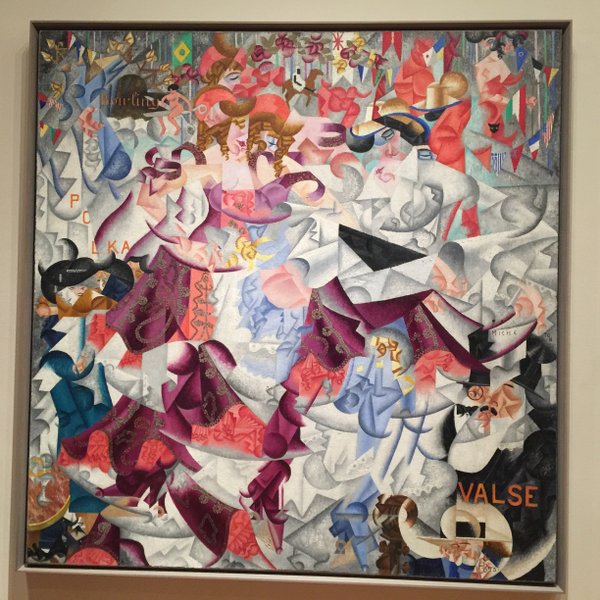
Dynamic Hieroglyphic of the Bal Tabarin
Oil on canvas with sequins Gino Severini(Italian 1883-1966)
Severini was fascinated by the dancehall as a subject for the opportunity it offered for the depiction of multisensory experience. Here he pictures a woman with brown curls and a white, blue, and pink flounced dress as she dances to music in the Paris nightclub Bal Tabarin. Different elements of the work point to current events—the Arab riding a camel refers to the Turco-Italian War of 1911, and flags convey sentiments of nationalism. In his depiction of Bal Tabarin the artist merges the Futurists’ interest in capturing the dynamism of motion with the integration of text and collage elements, such as sequins, influenced by his study of French Cubism (taken from MOMA site..)
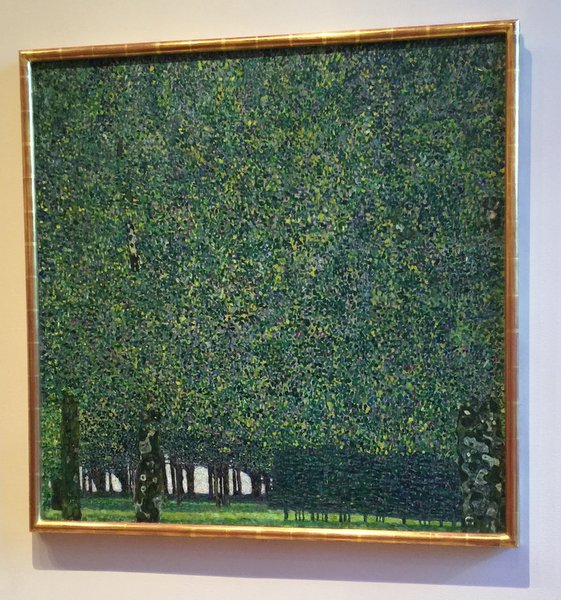
The Park Oil on Canvas Gustav Klimt (Austrian 1862-1918)

Hope, II
Oil on Canvas Gustav Klimt (Austrian 1862-1918)
Although images of women and children are frequent in the history of art, depictions of pregnancy are rare. In Hope, II a woman with a skull nestled into her gown lowers her head toward her swelling belly. Below, three women also bow their heads—in prayer or possibly mourning. The ornate decoration in Hope, II nearly overwhelms its surface. Klimt was committed to craftwork, and was among the many artists of his time who combined archaic traditions—here Byzantine gold leaf painting—with a modern psychological subject. Klimt lived and worked in turn-of-the-century Vienna (taken from MOMA site..)

I and the Village
Oil Paint Marc Chagall (Russian-French 1887-1985)
Painted the year after Chagall came to Paris, I and the Village evokes his memories of his native Hasidic community outside Vitebsk. In the village, peasants and animals lived side by side, in a mutual dependence here signified by the line from peasant to cow, connecting their eyes. The peasant's flowering sprig, symbolically a tree of life, is the reward of their partnership. For Hasids, animals were also humanity's link to the universe, and the painting's large circular forms suggest the orbiting sun, moon (in eclipse at the lower left), and earth. The geometries of I and the Village are inspired by the broken planes of Cubism (taken from MOMA site..)
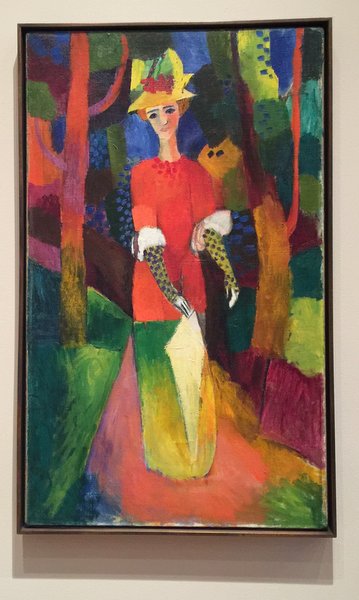
Lady in a Park Oil on Canvas August Macke (German 1887-1914) I loved those bright happy colors..
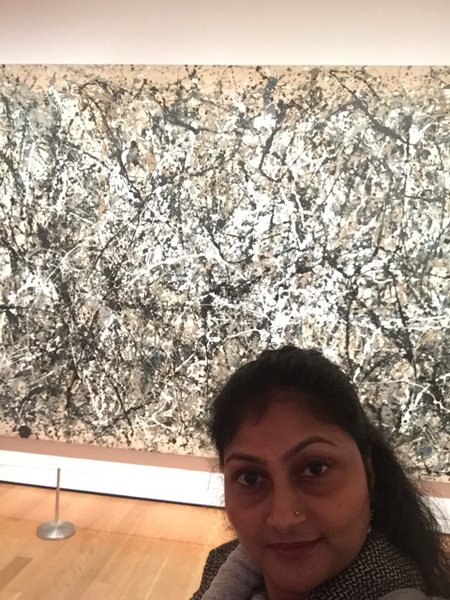
One: Number 31
Oil Paint Jackson Pollock (American 1912-1956)
This is one of three wall-size paintings that Pollock realized in swift succession in the summer and autumn of 1950. In 1947, Pollock began laying canvas on the floor and pouring, dribbling, and flicking enamel paint onto the surface, sometimes straight from the can, or with sticks and stiffened brushes. The density of interlacing liquid threads of paint is balanced and offset by puddles of muted colors and by allover spattering. The pictorial result of this tension is a landmark in the history of Abstract Expressionism. (taken from MOMA site..)

Flag
Encaustic,oil,on fabric on plywood Jasper Johns (American 1930)
“One night I dreamed that I painted a large American flag,” Johns has said of this work, “and the next morning I got up and I went out and bought the materials to begin it.” Those materials included three canvases that he mounted on plywood, strips of newspaper, and encaustic paint—a mixture of pigment and molten wax that has formed a surface of lumps and smears. The newspaper scraps visible beneath the stripes and forty-eight stars lend this icon historical specificity. The American flag is something “the mind already knows,” Johns has said, but its execution complicates the representation and invites close inspection. A critic of the time encapsulated this painting’s ambivalence, asking, “Is this a flag or a painting?” (taken from MOMA site..)

Painting No:4
Oil on canvas Vasudeo Gaitonde (Indian 1924-2001)
And then just when I was about to exit this section of galleries and was wondering why there aren't any artworks by an Indian artist... I see this serene painting of Vasudeo Gaitonde... I almost screamed in excitement.... since there wasn't much write up about the work or the artist..
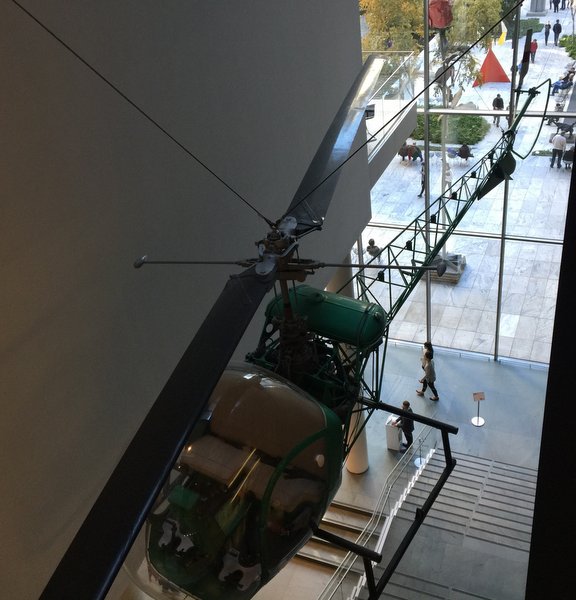
An installation in there...

One of the floor sealed off from the public.. yes its a massive building!
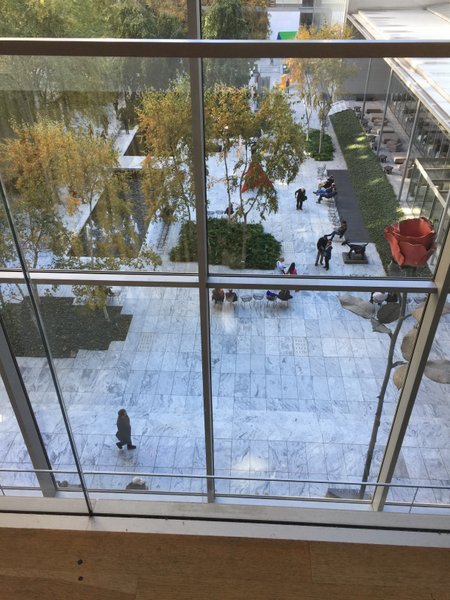
Another view of the courtyard..

In the lobby...
The Museum is usually open from 10AM-5PM, however its advisable to check the website regarding the timings once before you plan a trip... The ticket price is $25 for Adult and includes the electronic tour guide... a headset with the handset where for few selected paintings you can key in the painting no: and listen all about the painting... I was there for 3 hrs and could only cover the Collection Galleries... had to skip the Architecture and the Modern Art sections... so its easily a full day trip.
The first in the series is The Frick Collection, New York City. Click on the link to read through!
Comments are closed.

































